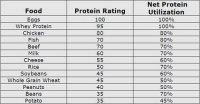Amazoniac
Member
For those that have missed, here's a summary of what has been discussed so far that might help making casein work better (it's clearly beyond replenishing what has been refined). I forgot two that were added later:
Creatine, magnesium;
Niacin, choline(, perhaps pantothenic acid);
B12, carotenes (papayas with the benefit of papain), vit E;
[Travo's] bromelaid from pineapfels;
Molybdenum, manganese; (tyw, 2016?)
B6, folate (low doses);
Gelatin, taurine, vitamin C;
Straight glutathione;
Fermentable carbs;
Zinc, selenium, iodine;
Potassium acetate/citrate.
Then, if those don't work:
Digestive enzymes;
Betaine HCl;
Thyroid hormones.




